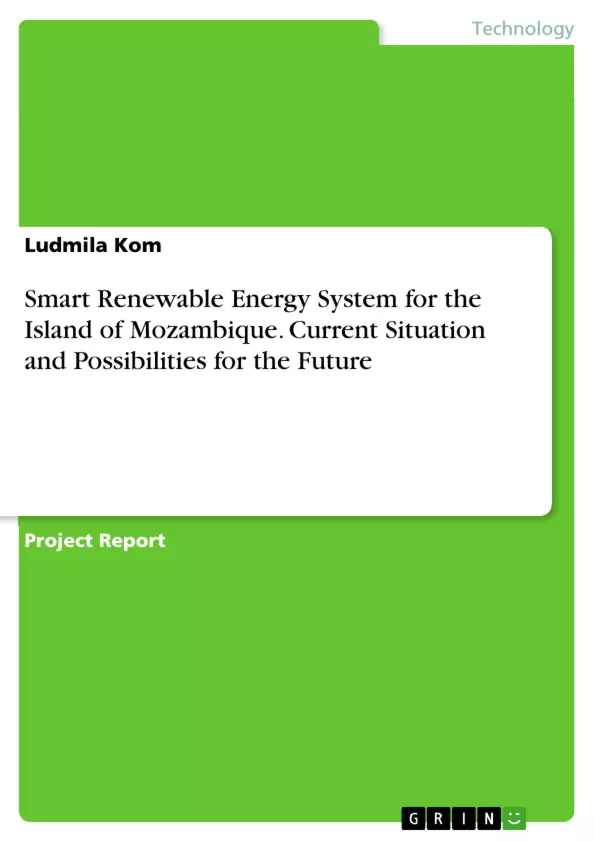This report shall provide a clear insight & analysis of the current energy system and energy use and demand of the Island of Mozambique. It also provides an energy model of the existing energy system and a simulation model or scenario for a potential future smart renewable energy system for the island. The aim of this report is to identify a possible smart energy system for the island that will otherwise improve the overall energy demand and consumption for the island in a sustainable manner. This report shall also provide ways in which the system can be implemented, through a combination of policies and incentives existing or non-existing.
Inhaltsverzeichnis (Table of Contents)
- Summary
- Introduction
- Island of Mozambique: Basic facts
- Analysis of current energy system
- Energy Supply
- Energy Demand & Use
- Energy Demand Growth
- Future renewable energy system
- Scenario-Photovoltaic System & ‘Business as Usual
- Implementation
- Scenario Support and Incentives
- Conclusion
Zielsetzung und Themenschwerpunkte (Objectives and Key Themes)
This report analyzes the current energy system and energy use and demand of the Island of Mozambique. It models the existing energy system and simulates a potential future smart renewable energy system for the island. The primary objective is to identify a sustainable smart energy system for the island that will improve overall energy demand and consumption. The report also explores implementation methods through a combination of existing and potential policies and incentives.
- Analysis of the Island of Mozambique's current energy system
- Modeling and simulating a potential smart renewable energy system
- Identifying a sustainable smart energy system for the island
- Exploring implementation methods through policies and incentives
- Improving overall energy demand and consumption in a sustainable manner
Zusammenfassung der Kapitel (Chapter Summaries)
The report begins with an introduction that provides basic facts about the Island of Mozambique. It then delves into an analysis of the island's current energy system, examining both energy supply and demand. This analysis includes details about the island's energy mix, consumption patterns, and growth projections.
The report then shifts to explore a future renewable energy system, specifically focusing on a scenario involving a photovoltaic system. This section includes discussions about the system's potential, implementation strategies, and supporting policies.
Schlüsselwörter (Keywords)
The key terms and concepts explored in this report include smart energy systems, renewable energy, photovoltaic systems, energy demand, energy consumption, sustainable development, island energy systems, and policy implementation.
- Quote paper
- Ludmila Kom (Author), 2019, Smart Renewable Energy System for the Island of Mozambique. Current Situation and Possibilities for the Future, Munich, GRIN Verlag, https://www.hausarbeiten.de/document/1061223


